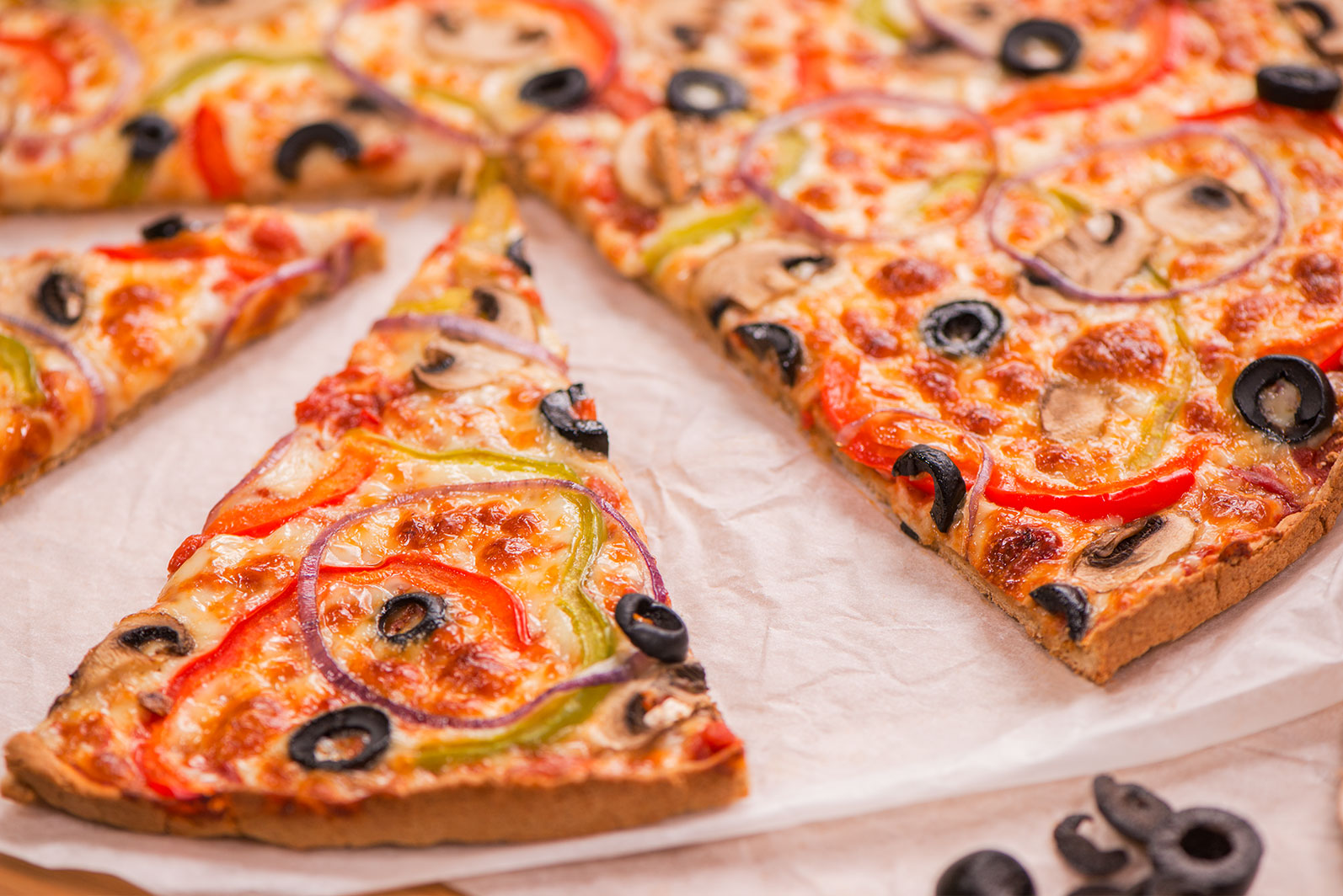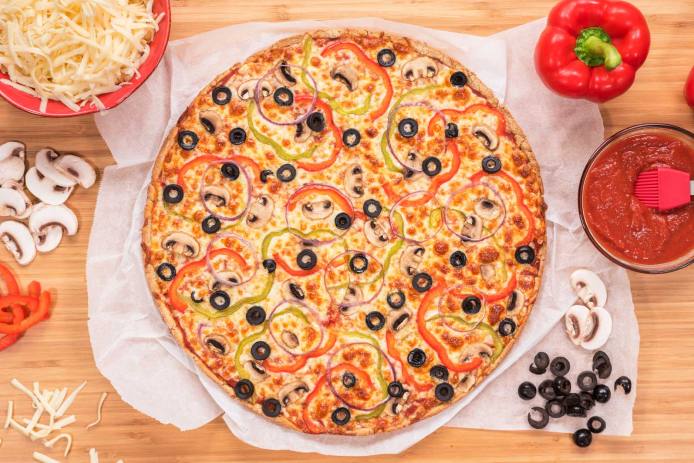Every second, 350 slices of pizza are consumed in the U.S. and, by the time you read this post, nearly 63,000 slices will be eaten. Vegetarian, meat-lovers, Hawaiian, Chicago-style deep dish, thin crust, thick crust… mmm… crust. When it comes to pizza, we are flexible with our toppings, but have some pretty strong opinions when it comes to the all-important crust.
We believe there’s a time and place for all pizza crusts, however, we will say that we love thick crust pizzas with that “authentic pizzeria” quality to them. We don’t normally find that quality in thin crust pizzas, but we found it in our pizza made on a gluten-free oat crust!
If you’ve had experience making doughs with 100 percent oat flour, you know they just don’t rise like doughs made with wheat flour. Oat flour lacks gluten – those long, stretchy strands that give wheat dough its structure and spring. So, why did we add yeast to our gluten-free dough?
We know it seems counterintuitive, but trust us on this one. The dough won’t rise much, but it will be soft and have a hearty, authentic taste. Not only does it please the gluten-free members of the group, but it gets a full round of thumbs-ups from the rest of us.
You can buy ready-made oat flour, or you can make your own by pulsing rolled oats in a food processor for one to three minutes. You might end up with some larger bits – simply sift those out and throw them back into your rolled oats. Whether you’re going homemade or store-bought, be sure to use oat flour or rolled oats that are certified gluten-free.
This dough is a little different to work with than a traditional pizza dough and will be somewhat crumbly after mixing. Press it into the pan with clean hands instead of trying to roll it out. It will take a few minutes, but we think of it as working up an appetite. If there are cracks in the dough, just smooth them out with your fingers before adding the sauce. Once the crust is fully cooked, you’ll never know they were there.
When we said this crust is hearty, we meant it. It’s soft and tasty, but very filling. This crust is high in fiber, which studies have shown can help you feel full faster. In fact, you will likely find yourself getting full on less pizza than you usually eat. That’s the oats at work!
You might be able to single-handedly eat a frozen thin crust pizza in one sitting, but most people will be feeling comfortably full well before reaching that point with this pizza. There goes our 350 slices per second!

Pizza (croûte d’avoine sans gluten)
Ingrédients
Pour la croûte:
- 1 tasse d'eau tiède, 100-110 ° F (250 ml)
- 2 c. à c. de miel (10 ml)
- 1 paquet de levure sèche active non instantanée
- 2 c. à s. d'huile d'olive extra vierge (30 ml)
- 3 tasses de farine d'avoine (750 ml)
- 1 c. à c. de sel (5 ml)
Pour la pizza:
- 1 tasse de sauce à pizza du commerce ou maison (250 ml)
- 3 tasses de mozzarella râpé (750 ml)
Instructions
Pour faire la pâte:
- Dans un petit bol ou une tasse à mesurer en verre, mélanger l'eau tiède, le miel et la levure. Laisser reposer 5 minutes ou jusqu'à dissolution complète. Incorporer l'huile d'olive.
- Mesurer 3 tasses de farine d'avoine dans un grand bol (vous devriez en avoir plus pour saupoudrer). Ajouter du sel.
- Faire un puits au centre de la farine et verser le mélange de levure. Remuer pour combiner. Démouler sur une surface farinée et pétrir jusqu'à consistance lisse. Utiliser de la farine d'avoine supplémentaire sur vos mains pour empêcher la pâte de coller.
- Couvrir la pâte d'une pellicule plastique et laisser reposer pendant que le four préchauffe et que vous préparez vos garnitures.
Pour faire la pizza:
- Préchauffer le four à 205 ° C (400 ° F).
- Presser la pâte finement dans un moule à pizza antiadhésif (ou bien huilé) de 14 po.
- Ajouter la sauce, vos garnitures préférées et le fromage (ou la sauce, le fromage et les garnitures)
- Cuire au four pendant 15 minutes ou jusqu'à ce que la croûte soit cuite et que le fromage bouillonne.
- Laisser refroidir légèrement, puis trancher et servir.




